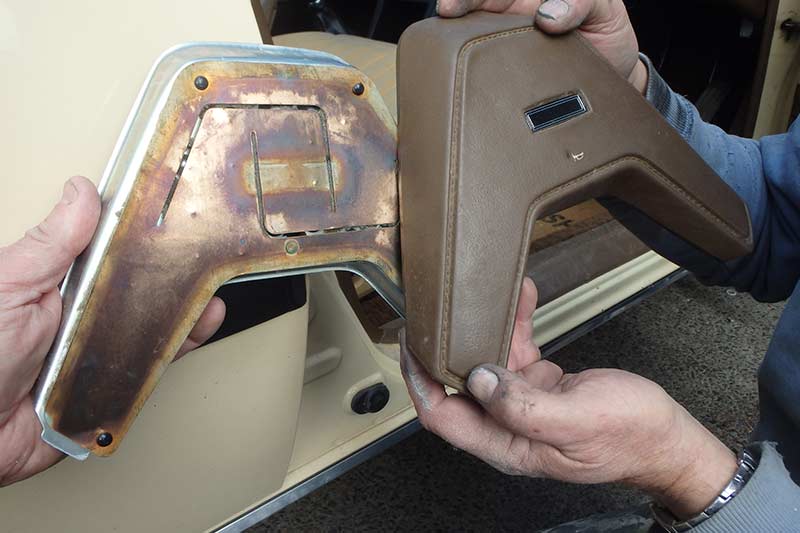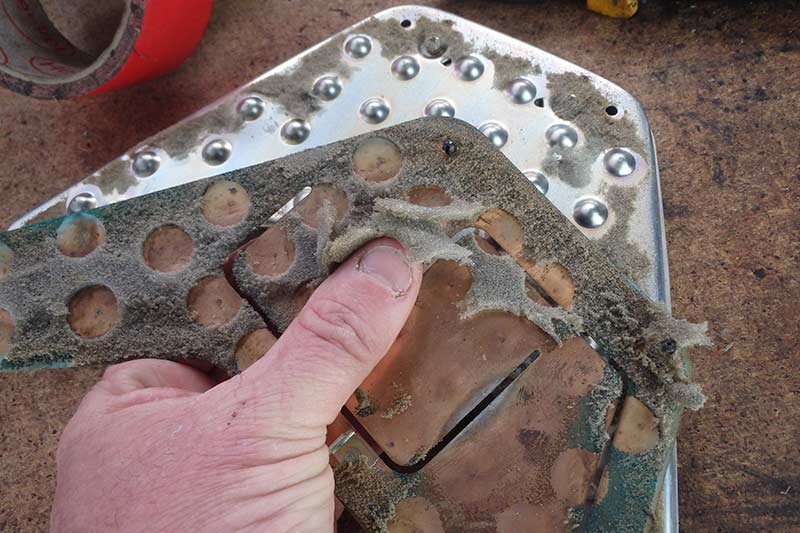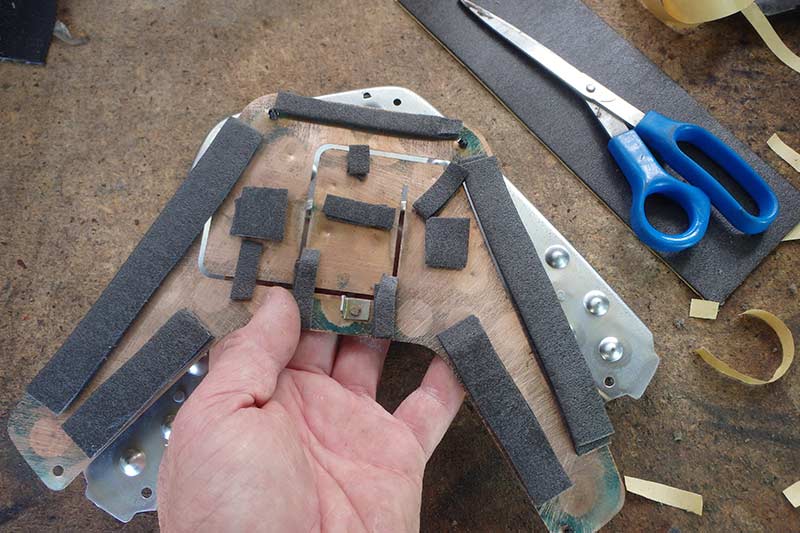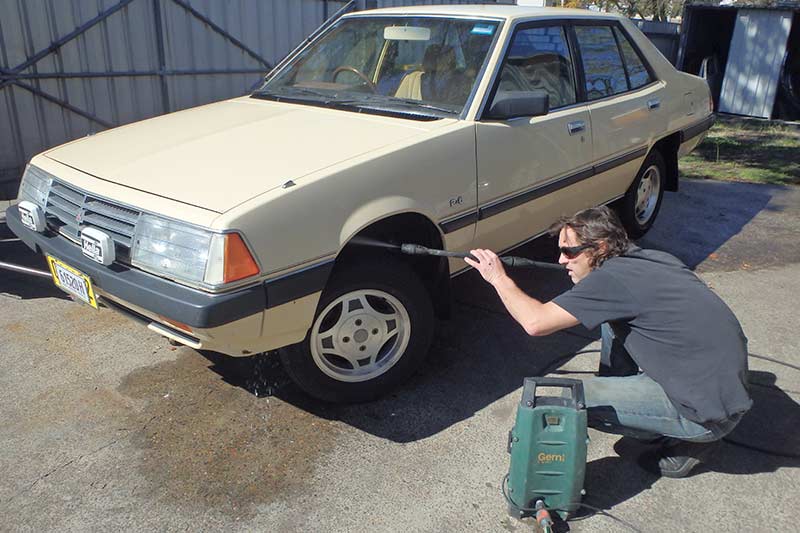1982 Mitsubishi Sigma SE - Fixing The Horn



|
After fixing a hootin' horn, Glenn Torrens' shed-find Mitsubishi Sigma is terrorising traffic again
With just two stops for fuel – and a "Stop-Revive-Survive" for a pie at Holbrook Bakery – my shed-find ’82 Sigma drove home from Melbourne to Newcastle almost without incident. If you care, it used 9.3 litres per hundred kays for the first tank and 10-point-something when I upped my cruising speed to a needle-width past 110km/h when I crossed the border into NSW.
The only little worry I had was the temp gauge rising around 5km from home (yes, after a 900km day!) alerting me to a possible coolant leak. Sure enough, a quick look under the bonnet revealed a tiny leak from the brand-new top radiator hose; a skerrick of corrosion on the thermostat housing had compromised its seal.
 The way things look behind the centre pad of a steering wheel
The way things look behind the centre pad of a steering wheel
I travelled home on a Vic-issued unregistered vehicle permit but of course I was keen to get my car on the road on NSW Historic plates as soon as possible. Similar to what Victorians have enjoyed for several years, this classic car club-based registration scheme introduced in NSW in late 2015 allows 60 days’ general use of the vehicle per year which means I can drive to the shops, or for work, as well as to club runs and events such as NSW’s growing number of Coffee & Cars mornings.
 Perished foam allowed the horn's metal contacts to close, activating the horn
Perished foam allowed the horn's metal contacts to close, activating the horn
My only task for NSW rego was to get the horn working properly. Everything else was tip-top before I left Melbourne – I’d even fitted brand new tyres.
My mate Johnny 2-Pack and I soon found the reason for the horn’s erratic operation: the foam within the steering wheel horn pad had perished, allowing the two metal plates in the horn switch to randomly come into contact – just like they would if you put your hand on the steering wheel centre pad. Bb-bB-Bb-BEEEEEEP!
 Self-adhesive foam was applied to fix the problem
Self-adhesive foam was applied to fix the problem
The possible fix left Johnny and me perplexed for a few minutes, until I remembered some self-adhesive thin foam that I had stashed somewhere in my garage. Given to me by a Toyota mechanic, the glue-backed foam is intended to be wrapped around towbar wiring harnesses during installation inside Toyota quarter panels to prevent rattles and wear-through.
I’ve never considered another use for the foam – until now!
 Job done!
Job done!
I found the foam and got to work, cutting it into strips and applying the strips to the metal interior of the horn pad, sort of replicating the now-perished factory arrangement that kept the horn switch contacts away from each other. Johnny, who’s worked in the crash-repair industry, reckons frail foam issues like those my Sigma had suffered is a common problem with cars of the 1980s.
 Glenn reckons thoroughly cleaning a car is always a good start to ownership
Glenn reckons thoroughly cleaning a car is always a good start to ownership
After testing, I re-installed my repaired horn pad to the steering wheel. With a NSW Unregistered Vehicle Inspection (known in NSW as a Blue Slip) issued soon after we fixed the horn, I had my deliciously 80s beige Sigma registered on club plates that afternoon, and cruised it to the pub that evening!
Unique Cars magazine Value Guides
Sell your car for free right here
Get your monthly fix of news, reviews and stories on the greatest cars and minds in the automotive world.
Subscribe

.jpg)












